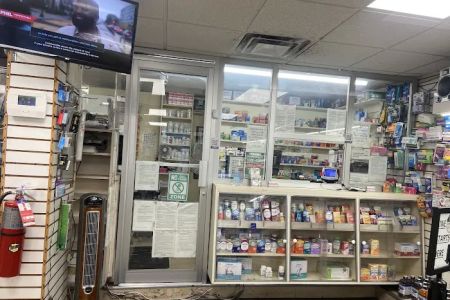How to Report a Pharmacy Dispensing Error
As a patient, there's nothing more concerning than realizing that you’ve received the wrong medication or dosage. Unfortunately, pharmacy dispensing errors are more common than many people think, and they can have serious consequences. I recently found myself in this situation and had to navigate the process of reporting a pharmacy dispensing error. If you ever find yourself in a similar situation, it’s important to know what steps to take to ensure that the mistake is addressed quickly and properly. In this guide, I’ll share what I learned about reporting a pharmacy error and how you can do the same if it ever happens to you.
1. Understanding Pharmacy Dispensing Errors
Before diving into how to report a pharmacy dispensing error, it’s important to first understand what such errors are and how they can occur. Pharmacy dispensing errors refer to situations where the medication given to a patient differs from the prescribed medication, either in terms of the medication itself, dosage, or instructions. These errors can be caused by various factors such as miscommunication, system glitches, or human mistakes. I’ve personally experienced a situation where a medication dosage was incorrect, and it led to a confusing situation that required immediate attention. Fortunately, once I understood the error, I was able to take the necessary steps to correct it.
1.1 Types of Pharmacy Errors
Pharmacy dispensing errors come in various forms. Common types include:
- Incorrect Medication: Receiving the wrong drug than what was prescribed.
- Incorrect Dosage: Getting the wrong dosage of the right medication.
- Incorrect Instructions: Receiving the wrong instructions on how to take the medication.
- Expired Medication: Being dispensed medication that has passed its expiration date.
In any case, it’s important to act quickly. Reporting the issue helps prevent similar incidents from affecting other patients and ensures you receive the correct treatment.
2. Steps to Take When You Notice a Pharmacy Error
If you suspect that a pharmacy dispensing error has occurred, don’t panic. The first step is to double-check your prescription and medication to confirm that an error has been made. I found that even with the best intentions, it can sometimes be easy to misinterpret what’s written on a prescription or the instructions on a medication bottle. Take a deep breath and review everything carefully.
2.1 Review Your Prescription and Medication
First, compare the medication you received with the prescription. Check the name of the medication, dosage, and the instructions on how to take it. If something doesn’t match, this is a clear sign that a dispensing error may have occurred. In my case, I found that the dosage on the bottle was different from what was prescribed, which made me realize there was a mistake.
2.2 Contact the Pharmacy Immediately
Once you’ve identified an error, contact the pharmacy right away. It’s best to call them and explain the situation calmly. Make sure to provide all relevant details, such as the prescription number, the medication you were supposed to receive, and the discrepancy you’ve found. I made sure to take note of the date and time of the incident, as well as the name of the pharmacist I spoke with. This made the process smoother when it came to following up.
3. Reporting a Pharmacy Dispensing Error
Reporting the error is crucial, especially if the pharmacy doesn’t resolve the issue right away. There are a few different avenues for reporting these errors. The first step is usually to report the error directly to the pharmacy’s management team or the pharmacy’s corporate office if it’s part of a larger chain. If the issue is not resolved to your satisfaction, you can escalate the matter by contacting state or federal regulatory agencies.
3.1 Contact the State Board of Pharmacy
If your pharmacy fails to address the error or if the error caused harm, the next step is to contact your state’s board of pharmacy. In most states, the board of pharmacy regulates pharmacies and ensures that they operate in compliance with the law. Filing a complaint with the board is an effective way to ensure that the error is officially logged and investigated. I found that the board often has a simple online form where you can submit your complaint, and they will investigate the matter.
3.2 File a Report with the FDA
If the dispensing error involved a prescription drug, you can also file a report with the U.S. Food and Drug Administration (FDA). The FDA allows consumers to report adverse events or mistakes involving medications. This step is particularly useful if you suspect the error is linked to a specific manufacturer or batch of drugs. The FDA’s MedWatch program is an excellent resource for reporting medication issues.
4. What to Do After Reporting the Error
After you've reported the pharmacy dispensing error, it’s important to follow up and make sure that the issue is resolved. I learned that sometimes the process can take a little while, depending on the severity of the issue and the agency involved. Stay in touch with the pharmacy or the regulatory body to ensure that the error is documented and appropriate action is taken.
4.1 Keep a Record of Everything
Throughout the process, I found it helpful to keep a record of all communications, including emails, phone calls, and any formal reports. If there are any medical costs associated with the mistake, you’ll need this documentation for potential reimbursement or compensation claims. Keeping these records also helps ensure that the problem is addressed and can prevent future mistakes from happening.
5. Preventing Future Pharmacy Errors
While mistakes can happen, there are steps you can take to minimize the chances of a pharmacy error happening again. Regularly double-check your prescriptions when you pick them up, and don’t hesitate to ask your pharmacist questions about the medication. I now make it a point to ask about any potential side effects, drug interactions, or dosage adjustments each time I get a new prescription filled.
5.1 Be Proactive
Being proactive and involved in your own health care is key to preventing mistakes. Always communicate clearly with your pharmacy and doctors, and be sure to notify them of any allergies or conditions that might affect your medication. As a patient, you have the right to ask questions and ensure that your medications are dispensed correctly. If you ever encounter an issue, don’t hesitate to act quickly and report the problem.














